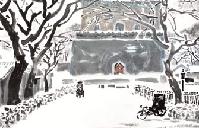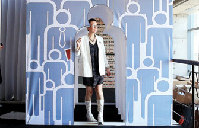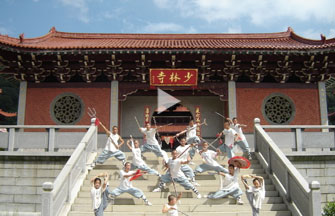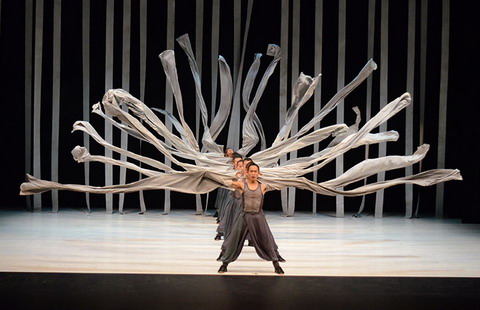Muralists take old art form to cutting edge
By Deng Zhangyu ( China Daily ) Updated: 2014-10-14 09:38:18
 |
|
The third National Mural Exhibition in Beijing. Provided to China Daily |
From the earliest etchings on cave walls to guerilla art painted on walls inside subway stations, murals have developed right along with human culture for thousands of years. The just-ended third National Mural Exhibition in Beijing, held once every five years, offered a glimpse into the current development of an art form that dates back to the Stone Age.
The 159 murals on display at the Art Museum of Central Academy of Fine Arts showed muralists' exploration of new materials applied to murals in the past five years. Murals are not simple paintings on walls any more. Sculptures, installations and new media are incorporated into this traditional art form.
|
|
|
|
"Murals are all inclusive of different art forms. As long as it suits the environment, everything can be used when creating a mural, such as metals, ceramics and other comprehensive materials," says honorary chairman of the China Mural Association Hou Yimin.
One of the most impressive murals on the show, Grain Store, was a photo montage of works on 10 buildings at three art museums. The collection of tile murals covered 23,000 square meters on different sites, completed by students and teachers of Sichuan Fine Arts Institute in Chengdu.
The work Lost explored digital technology, using 3-D graphics software to create overlapping images that form a boat. The work Birds displayed in a Beijing subway station used inlaid pieces of waste glass, known as cullet, and LED lamps to make a visual effect of colorful birds.
Silk, glass, wood, clay, porcelain, sand, leather - all of the materials one can imagine could be found in the various works on display.
China's mural art reached its peak in the Tang Dynasty (AD 618-907) and has declined since the Song Dynasty (960-1279). Since the founding of New China in 1949, artists have gradually returned to this art form. Since 1978, the airport mural revival movement led by artists Yuan Yunfu and Zhang Ding has turned a new leaf for the art form in China.
"Murals have become a cultural symbol of many cities and businesses. Although it's not that popular compared to oil on canvas and ink and water paintings, it faces the public directly," says Hou.
Hou adds that murals are always painted on landmark buildings that attract hundreds of thousands of people, which leads to muralists' experimenting with new materials to create their art.
While actual murals are created on walls and ceilings, many works in the exposition were only draft designs not yet executed in public spaces.
Hou explains that if the National Mural Show, which is put on only once every five years, only presents complete works, there will be little chance for young artists and it will kill their passion for the art form.
"For the sake of future murals, we welcome creative mural designs," Hou says.
|
|
|
|
|
|
|
|

























 Raymond Zhou:
Raymond Zhou: Pauline D Loh:
Pauline D Loh: Hot Pot
Hot Pot Eco China
Eco China China Dream
China Dream China Face
China Face






